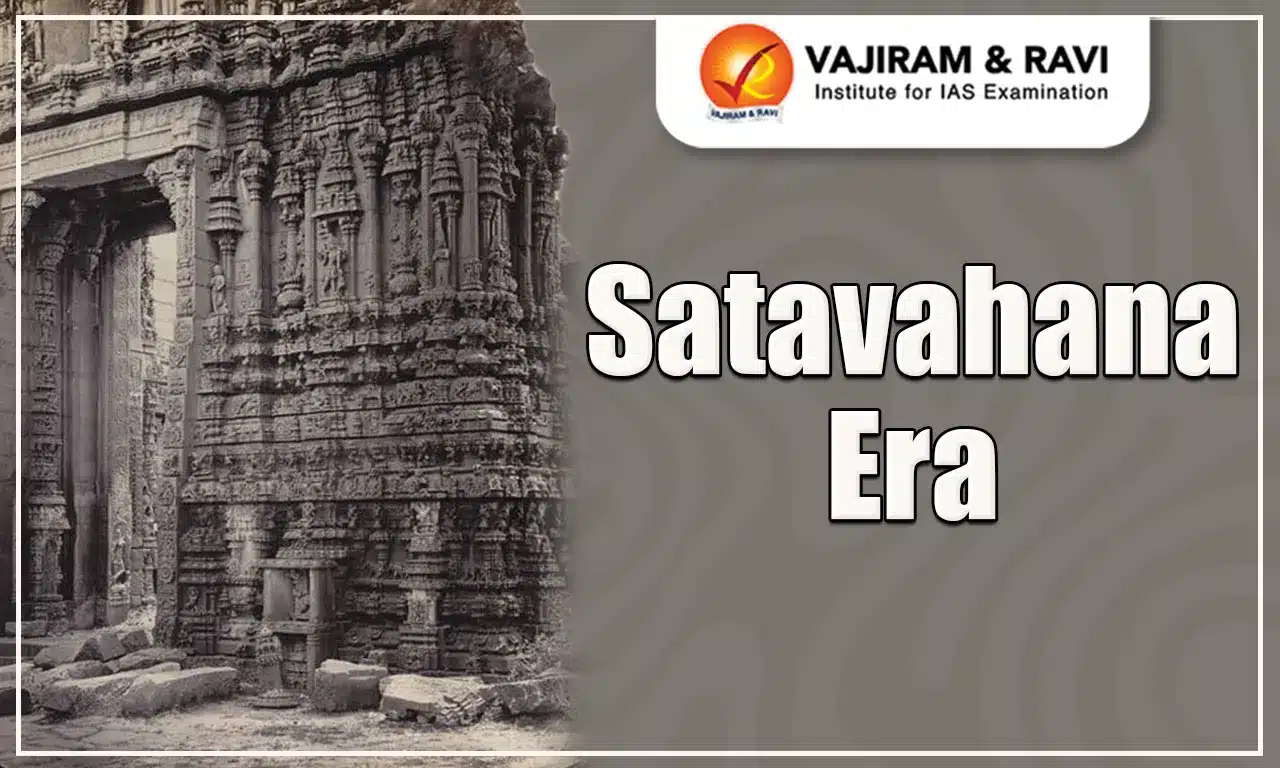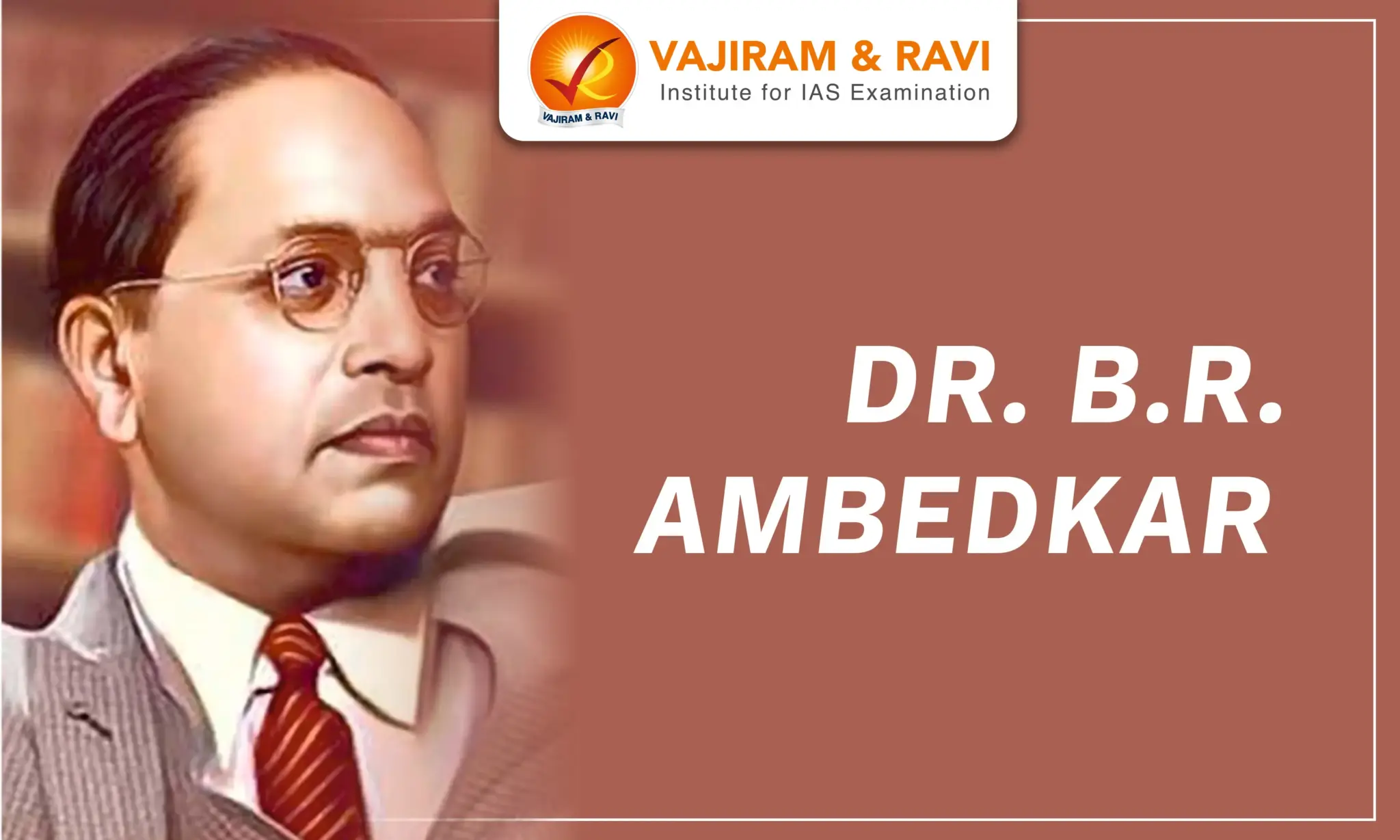Emergence of Satavahanas
The most important of the native successors of the Mauryas in the north were the Shungas, followed by the Kanvas. In the Deccan and central India, the Satavahanas succeeded the Mauryas, although after a gap of about 100 years in the first century BCE. They ruled over parts of Andhra, Maharashtra, Karnataka and Madhya Pradesh. They were also known as the Andhras.
Map: Satavahans
| Satavahana Dynasty - Rulers and their Contributions | ||
| Period: 60 BC - 225 AD | Capital: Pratishthana (Paithan) and Amravati | |
|
||
| Simuka (60 BC- 37 BC) |
|
|
| Satakarni I (70- 60 BC) |
|
|
| Hala |
|
|
| Gautamiputra Satakarni (106-130 AD): |
|
|
| Vashishtaputra Pulamayi (130 – 154 AD) |
|
|
| Yajna Sri Satakarni (165 – 194 AD) |
|
|
Table - Satavahanas Dynasty
Art and Architecture during Satavahanas
| Art and Architecture | ||
|
||
|
Amravati School of Art (Andhra Pradesh) |
|
|
|
Amravati Stupa (Andhra Pradesh) |
|
|
Table - Art and architecture during Satavahanas
Polity and Administration
- Nature: Satavahans retained some of the administrative features of Mauryas. The king was represented as the upholder of dharma. They had a decentralised administration.
- Aharas: sub-divisions of the Kingdom into districts (administered by Amatyas or Mahamatras).
- Rashtras: The administrative divisions were also called Rashtras, and their officials were called Maharashtrikas.
- Grama: It was the lowest level of administration under the charge of a Gramika or Gaulmika (head of the military regiment consisting of nine chariots, nine elephants, twenty-five horses and forty-five-foot soldiers)
- Major officials associated with the administration:
- Senapati: Provincial governor
- Feudal system: had three grades of feudatories:
- Raja ( had the right to strike coins),
- Mahabhoja
- Senapati.
- Language: The official language was Prakrit, but the script was Brahmi. The Satavahanas also used Sanskrit in political inscriptions, but rarely.
- Military administration:
- Katakas and Skandhvaras: These were the special military camps or cantonment areas.
- Military strength: According to Pliny, the Andhra kingdom maintained an army of 100,000 infantry, 2000 cavalry and 1000 elephants.
- The practice of tax-free villages: The Satavahanas started the practice of granting tax-free villages to Brahmanas and Buddhist monks. The cultivated fields and villages granted to them were declared free from intrusion by royal policemen, soldiers, and other royal officers.
- Revenue was collected both in cash and kind.
Economy
The period was known for remarkable progress in trade and economy.
- Progress in the fields of trade and industry: Increased activities of organised merchant guilds (Sethi) were witnessed during this period.
- Trade: Ptolemy mentions many ports in the Deccan. (Western port: Kalyani; Eastern ports: Gandakasela and Ganjam)
- Trade centres: Pratishthana and Tagara were two important Satavahana trade centres mentioned by the Periplus of the Erythraean Sea. Sopara and Bharuch were import trading outposts.
- Import items: wine, cloth, choice unguents, glass and sweet clover.
- Agriculture: Economic expansion through the intensification of agriculture was done.
- Paddy transplantation was known, and other agricultural crops were being cultivated. In foreign accounts, Andhra was mentioned for its cotton products.
- Other occupations: Gandhikas (perfumers) were mentioned as donors (a general term to connote all kinds of shopkeepers).
- Extensive coinage system: Issued potin (a mixture of copper, tin and lead), copper and bronze coins. The Satavahana kings mostly used lead as a material for their coins. Silver coins, called Karshapanas were used for trade.
- The coins were inscribed with animal motifs and names of ‘Satakarni’ and ‘Pulumavi’ with different shapes.
- On one side, most of the Satavahana coins had the figure of an elephant, horse, lion or Chaitya. The other side showed the Ujjain symbol - a cross with four circles at the end of the two crossing lines. The dialect used was Prakrit.
- Other purposes: Although the coins were devoid of any beauty or artistic merit, they constituted a valuable source material for the dynastic history of the Satavahanas.
- The coins were inscribed with animal motifs and names of ‘Satakarni’ and ‘Pulumavi’ with different shapes.
Religion and Society
- Religion:
- The Satavahana rulers were Brahmanas, and they represented the march of triumphant Brahmanism.
- They performed Vedic sacrifices such as Ashvamedha and Vajapeya paying liberal sacrificial fees to the Brahmanas.
- They also worshipped a large number of Vaishnava gods, such as Krishna and Vasudeva.
- They also patronised Buddhism by giving land grants to the monks.
- Society:
- Social structure: Varna and Ashrama systems continued to govern the society. The society consisted of four Varnas: Brahman, Kshatriya, Vaishya, and Sudra.
- Due to flourishing trade and commerce, merchants and artisans formed an important social strata. Merchants generally named themselves after the towns to which they belonged.
- Position of women: The position of women was better compared to other kingdoms, as kings bore their mother’s name instead of their fathers’. This shows a matrilineal social structure, especially in the royal families.
- The emergence of large settlements was seen in fertile areas due to agricultural expansion.
Decline of Satavahana Period
Various reasons mentioned below were collectively responsible for the decline of the Satvahana dynasty:
- Line of weak rulers: Rulers after Yajnashri Satakarni were considered poor and weak. He was the last powerful Satavahana ruler.
- Huge empire: The kingdom was divided between Yajnasri Satakarni's successors, who were inefficient in handling a huge empire.
- Loss of centralised power: After the death of Yajna Satakarni and the rule of weak rulers, there was a rise of its feudatories, possibly as a result of a loss of centralised power.
- Division of empire: The Satavahana empire broke up into five smaller kingdoms after the death of Pulumavi IV:
- Satavahanas kings were succeeded by the Kings of the Ikshvaku dynasty.
Last updated on November, 2025
→ Check out the latest UPSC Syllabus 2026 here.
→ Join Vajiram & Ravi’s Interview Guidance Programme for expert help to crack your final UPSC stage.
→ UPSC Mains Result 2025 is now out.
→ UPSC Notification 2026 is scheduled to be released on January 14, 2026.
→ UPSC Calendar 2026 is released on 15th May, 2025.
→ The UPSC Vacancy 2025 were released 1129, out of which 979 were for UPSC CSE and remaining 150 are for UPSC IFoS.
→ UPSC Prelims 2026 will be conducted on 24th May, 2026 & UPSC Mains 2026 will be conducted on 21st August 2026.
→ The UPSC Selection Process is of 3 stages-Prelims, Mains and Interview.
→ UPSC Result 2024 is released with latest UPSC Marksheet 2024. Check Now!
→ UPSC Prelims Result 2025 is out now for the CSE held on 25 May 2025.
→ UPSC Toppers List 2024 is released now. Shakti Dubey is UPSC AIR 1 2024 Topper.
→ UPSC Prelims Question Paper 2025 and Unofficial Prelims Answer Key 2025 are available now.
→ UPSC Mains Question Paper 2025 is out for Essay, GS 1, 2, 3 & GS 4.
→ UPSC Mains Indian Language Question Paper 2025 is now out.
→ UPSC Mains Optional Question Paper 2025 is now out.
→ Also check Best IAS Coaching in Delhi
Satavahana Era
Q1. What does the ‘Gulma’ refers to during the Satavahana period? +
Q2. Who wrote the Amaravati inscription related to Satavahanas?+
Tags: quest satavahana era

















